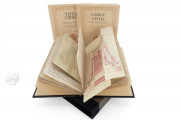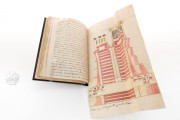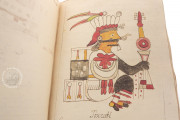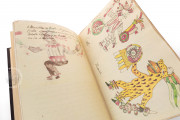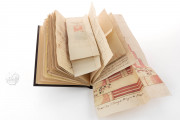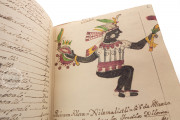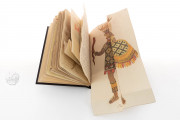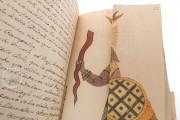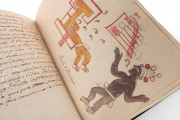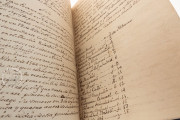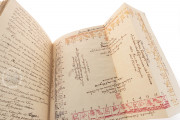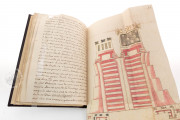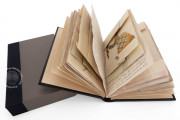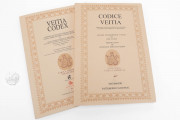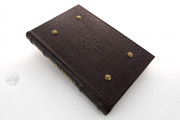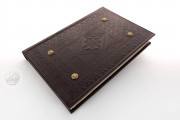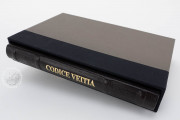Created in 1755 in Mexico City, the Codex Veytia is a member of the Magliabechiano Group named for the much older Codex Magliabechiano. The codex was copied with variations from the Codex Ixtlilxochitl by the historian Mariano Veytia (1718-1780). Titled on a flyleaf as "Modos que tenían los Yndios para zelebrar sus fiestas" (Ways that the Indians Had to Celebrate Their Festivals), it is a cultural encyclopedia of ancient Mesoamerica. It boasts twenty-two illustrations, eleven of which occupy a full page.
The manuscript's paintings imitate Nahuatl-style pictograms while also betraying European style. The descriptive text is written in Spanish. Four of its sixty-four leaves are foldouts revealing images larger than the text pages.
Pictographic Tradition Replicated
The manuscript’s images convey information about deities, feast days, calendars, locations, and abstract concepts in the Mesoamerican pictographic tradition, although the figure style is European. The palette is dominated by yellow, orange, red, brown, and black, with only a few touches of green.
Singled out for oversize images are the war deity Huītzilōpōchtli, the rain deity Tlaloc, and the Great Temple of Tenochtitlan, as well as a calendar diagram, arranged into four groups of thirteen days—starting with reed, rabbit, house, and knife.
Huītzilōpōchtli, deity of war and the sun, is represented twice. The first painting, a half-length figure occupying a half page (fol. 15r), is especially valuable as a copy of an image now lost from the Codex Ixtlilxochitl. It is very much in the ancient tradition with its simple blocks of red, yellow, and black. The second, oversize representation (fol. 20r) shows the deity in full-length and painted illusionistically in European style with fine attention to detail.
The festival of Pastli is illustrated by a scene of human sacrifice (fol. 12r). A figure painted with black skin and dressed in a loincloth, anklets, and an elaborate headdress—probably representing a priest—is included as is a temple with bloodied steps (fol. 12r).
A Highly Descriptive Text
The manuscript opens with an explanation of the Mesoamerican mode of counting (fol. 1). The next section is devoted to descriptions of rituals (fols. 2-18). The gods and the Great Temple are described (fols. 19-25), followed by a chronology of Mexico City and its rulers (fols. 26-27). The second half of the manuscript is devoted to a description of and notes on the Aztec calendar (fols. 28-64). The Spanish text is written in Veytia's neat script.
Bequeathed to Alfonso XIII
The Codex Veytia was in the library of Juan Bautista Muñoz (1745-1799), a historian of Spanish America, who bequeathed his manuscripts to King Alfonso XIII of Spain (1886-1941) and it entered the Spanish royal collection.
We have 1 facsimile edition of the manuscript "Codex Veytia": Códice Veitia facsimile edition, published by Testimonio Compañía Editorial, 1986
Request Info / Price

